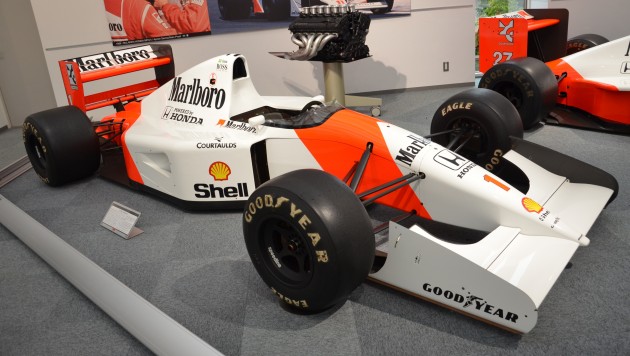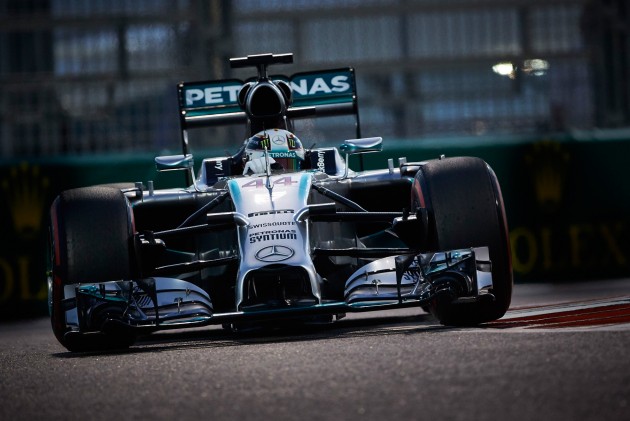This is a truly marvellous video that traces the driving characteristics of Formula 1 cars from the 1950s all the way to the present day.
It was back in May 1950 that the first world championship was held at Silverstone. The cars made considerable technological advances since the 1950s, but also at a tremendous human cost, with 13 drivers killed in the first decade. The first seasons were run using pre-war cars like the Alfa 158, which were front engined, narrow-treaded vehicles with 1.5 litre supercharged or 4.5 litre normally-aspirated engines.
It was only in 1954, when the regulations made it mandatory for the engines to be limited to 2.5 litres. From the 1960s to 1970s, it was all about British dominance, with a great snippet of Sir Jackie Stewart piloting his machine around Brands Hatch. The cars were faster and slicker, with Lotus introducing ground-effect aerodynamics that was eventually outlawed for being too dangerous.
In 1976, Ferrari, with drivers Niki Lauda and Clay Regazonni, dominated proceedings, until Lauda crashed heavily at the Nurburgring in a race that should never have gone ahead. His remarkable feat of getting back in the cockpit was immortalised in the 2013 Hollywood blockbuster, Rush, and he still remains one of the most enigmatic drivers to ever grace the circus that is Formula 1.
Turbocharged engines dominated the sport in the 1980s, and these turbos were ultimately banned in 1989. By the early 1990s, semi-automatic gearboxes and traction control became common place in Formula 1. McLaren and Williams dominated the 1990s, but after Aryton Senna’s death at Imola, Formula 1 underwent a sea change.
By the year 2000, engines other than normally-aspirated 3.0 litre V10s were banned. In 2006, the engine were further reduced to 2.4 litre V8s. There was then a rev limit of 19,000 rpm introduced in 2007, with a host of limits on the number of engines a team could use over a year too.
It was in 2014, that perhaps the most significant changes in Formula 1 occurred. Turbocharged V6 engines with 1.6 litre capacity and eight-speed gearboxes were introduced, and they will need to last 4,000 km before being replaced. More importantly, the power train units now have a 15,000 rpm limit. But there is so much more to it than meets the eye.
The power unit, apart from the internal combustion engine (ICE) and turbocharger (TC) has a Motor Generator Unit-Kinetic (MGU-K), which harvests wasted energy normally lost under braking. It also has a Motor Generator Unit-Heat (MGU-H), which collects energy in the form of heat that is expelled from the exhaust system and a Energy Store (ES), which is a bunch of batteries that stores all the energy from the ICE, TC, MGU-K and MGU-H.
Not to forget, there is also the Control Electronics (CE) that includes the Electronic Control Unit (ECU) and the software that manages the whole power unit. Formula 1 is now as relevant as ever to how our road cars will be in the near future, and it’s always fascinating to see how these current power units will dictate the future of our car’s engines in the years to come.
Looking to sell your car? Sell it with Carro.




haihhh,this years cars sound so weak, will have to look forward to the 2017 engines
The v10 era was the best. The screaming v10 of Schumacher’s Ferrari vs the howling McLaren of Hakkinen out to battle for supremacy. The best of which during the race at Spa in 2000 when both Schumi and Mika were nose to tail when along the kemmel straight passing Ricardo Zonta did Mika made the move. Though I am a Schumi fan, that was one of the most epic battles of F1 and I have to hand it to Mika, he deserved the win. Now, meh.. Not so much.. Weak sounding engines that belongs in a lawnmower.
I’ve always thought the boffins at FIA and F1 were closeted lawnmower racing enthusiasts, in 2009 they employ the lawnmower harvester look on aero, in 2014 they changed the engine to sound like a lawnmower and voila!!! An oversized lawnmower racing championship minus the soil track!
I have to say two F1 eras were the best : the mid-1980s 1.5L turbo F1 and the early 1990s 3.5L N.A F1 : the variety of the constructors, engine configuration (Straight 4,V6,V8 during turbo era and V8,V10&V12 during 3.5L N.A era – thus the variety of sounds), car design and drivers skill during these two periods were something spectacular. Not to say the early 2000s 3.0L V10 F1 were boring, but it still can’t quite match the atmosphere of those two eras..
…and then appeared the LMP1 machines of Le Mans with their diverse hybrid powertrain technologies, driven by rules that encourage creativity and innovation for the pursuit of fuel efficiency which ‘unfortunately’ also resulted in much faster cars…. rendering technologies in F1 looking quite stone age.
Formula 1 is now as relevant as ever to how our road cars – check yur speeling mr anil
Early 90s. RIP Senna.